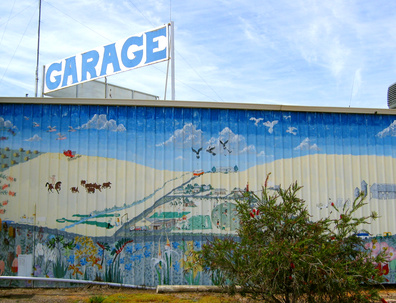
Over time the radiator in the Mercedes 190E will degrade due to the buildup of debris, scaling and general wear and tear. The radiator may eventually fail and replacing it will be the only option. Purchasing the radiator from an automotive-supply store and installing it yourself is cheaper than taking the Mercedes to a radiator repair shop to have it replaced. By doing the job yourself, you can also make sure it gets done properly--and on time.
Drain the radiator fluid from the radiator. Place a drain pan under the petcock located on the lower left of the radiator. Open the petcock to drain the fluid. Close the petcock when finished.
Remove the 8 mm bolts that hold the radiator shroud onto the upper radiator support. There are four bolts in total. Lift the shroud off the radiator.
Remove the lower radiator hose from the water inlet tube. Squeeze the two metal tabs on the radiator hose clamp together with a pair of pliers. With pressure released on the hose, pull the hose off the inlet tube. Expect some radiator fluid to drain out of the hose.
Remove the upper radiator hose from the upper inlet tube in the same manner as the lower hose. Again, some fluid may drain from the hose when removed.
Locate the radiator overflow hose on the side of the radiator. The hose connects the radiator and the overflow tank. Remove the clamp that secures the hose to the radiator.
Remove the 10 mm bolts that secure the radiator to the lower radiator support beam. There is one bolt in each of the lower corners. Remove the 10 mm bolts that secure the radiator to the upper radiator support beam. Again, there is one bolt for each corner.
Lift upward on the radiator to remove it from the engine bay. Be cautious of the radiator fan. It could snag the aluminum fins of the radiator and cause damage.
Place the new radiator into the engine bay with the inlet holes facing the engine. Secure the radiator to the upper and lower radiator support beams with the old 10 mm bolts. If the old bolts are heavily corroded, use new bolts.
Connect the overflow hose back to the radiator overflow inlet on the radiator and secure the hose with the hose clamp. If the hose clamp is heavily corroded, use a new hose clamp.
Slide the upper radiator hose onto the inlet tube and secure it with the radiator hose clamp. If the hose clamp is heavily corroded, use a new hose clamp.
Slide the lower radiator hose onto the water inlet tube and secure it with a new radiator hose clamp. Do not use the old clamp, because the clamp typically is exposed to road debris, salt and water.
Check the petcock to ensure it is closed. Turn it clockwise to close it.
Remove the radiator filler cap and fill it with a 50/50 mix of radiator fluid and distilled water.
Run the engine for five minutes with the radiator cap off to remove any air from the lines. During this process, it is normal for the radiator fluid level to go down. Stop the engine and add more radiator fluid and distilled water into the radiator. Maintain the 50/50 mix. Place the radiator cap back onto the radiator.
Install the radiator shroud with the 8 mm bolts that were previously removed.